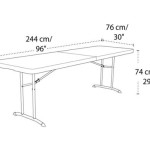Designing Your Outdoor Vegetable Garden: A Comprehensive Guide
Designing an outdoor vegetable garden is a rewarding endeavor that provides fresh, healthy produce and enhances the aesthetic appeal of a property. A well-planned garden optimizes space, promotes efficient resource utilization, and increases the likelihood of a successful harvest. This article explores key considerations and strategies involved in designing an effective and productive outdoor vegetable garden.
Assessing the Site and Environmental Factors
The first critical step in designing a vegetable garden involves a thorough assessment of the chosen site. Several environmental factors directly impact the success of vegetable cultivation. These factors include sunlight exposure, soil quality, water availability, and potential threats such as pests and diseases.
Sunlight is paramount for photosynthesis, the process by which plants convert light energy into chemical energy. Most vegetables require at least six hours of direct sunlight per day to thrive. Observe the site throughout the day to determine the amount of sunlight it receives. Note any obstructions, such as trees or buildings, that might cast shadows and limit sunlight exposure. Southern-facing locations in the Northern Hemisphere and northern-facing locations in the Southern Hemisphere generally receive the most sunlight. If the site lacks sufficient sunlight, consider using reflective materials to redirect light or choosing vegetables that tolerate partial shade, such as leafy greens like lettuce and spinach.
Soil quality is equally important. Vegetables require well-draining soil that is rich in organic matter. Conduct a soil test to determine the pH level and nutrient content. The ideal pH range for most vegetables is between 6.0 and 7.0. Amend the soil as needed to correct pH imbalances and improve fertility. Adding compost, aged manure, or other organic matter enhances soil structure, improves drainage, and provides essential nutrients. If the soil is heavy clay or overly sandy, consider building raised beds or using container gardening techniques to create a more favorable growing environment.
Water availability is another crucial consideration. Vegetables require consistent moisture, especially during hot and dry periods. Assess the proximity of a water source, such as a garden hose or irrigation system. Ensure that the water source provides adequate water pressure and volume to meet the garden's needs. Consider installing a drip irrigation system or soaker hoses to deliver water directly to the roots, minimizing water waste and reducing the risk of fungal diseases. Rainwater harvesting can also supplement water needs, promoting sustainable gardening practices.
Finally, evaluate potential threats from pests and diseases. Identify common pests and diseases in the region and implement preventative measures to minimize their impact. Consider using organic pest control methods, such as introducing beneficial insects or applying natural pesticides. Crop rotation helps prevent soilborne diseases and pest infestations. Fencing or netting can protect plants from animal pests, such as rabbits and deer.
Planning the Garden Layout and Plant Selection
Once the site has been assessed, the next step involves planning the garden layout and selecting appropriate plant varieties. The layout should optimize space utilization, facilitate efficient gardening practices, and enhance the aesthetic appeal of the garden. Plant selection should consider environmental factors, personal preferences, and the desired yield.
Consider different garden layouts, such as row gardening, square foot gardening, or raised beds. Row gardening is a traditional method that involves planting vegetables in long, straight rows. This layout is suitable for larger gardens and facilitates easy access for cultivation and harvesting. Square foot gardening divides the garden into a grid of one-foot squares, allowing for intensive planting. This method is ideal for smaller gardens and maximizes space utilization. Raised beds provide excellent drainage, improve soil quality, and facilitate accessibility. They are particularly useful in areas with poor soil or limited space.
When planning the layout, consider the mature size of each plant. Avoid planting tall plants that will shade smaller plants. Group plants with similar water and nutrient requirements together. Use companion planting techniques to enhance growth and deter pests. For example, planting basil near tomatoes can improve tomato flavor and repel insects. Marigolds planted near vegetables can deter nematodes and other soil pests.
Selecting appropriate plant varieties is crucial for success. Choose varieties that are well-suited to the local climate and growing conditions. Consider factors such as disease resistance, maturity time, and yield potential. Consult with local nurseries or extension agents to identify suitable varieties for the region. Start seeds indoors to get a head start on the growing season, especially in areas with short summers. Alternatively, purchase transplants from a reputable nursery.
When selecting plants, consider personal preferences and the desired yield. Plant vegetables that are frequently consumed and that are difficult to find or expensive to purchase. Consider the amount of space available and choose varieties that are appropriate for the garden size. Stagger plantings to extend the harvest season. Plant successive crops of fast-growing vegetables, such as lettuce and radishes, to ensure a continuous supply of fresh produce.
Implementing Sustainable Gardening Practices
Sustainable gardening practices promote environmental stewardship, conserve resources, and minimize the impact on the environment. These practices include water conservation, soil management, and integrated pest management.
Water conservation is essential for sustainable gardening. Use water-efficient irrigation methods, such as drip irrigation and soaker hoses, to deliver water directly to the roots. Water early in the morning to minimize evaporation. Mulch around plants to retain moisture and suppress weeds. Collect rainwater to supplement water needs. Group plants with similar water requirements together to facilitate efficient watering.
Soil management is crucial for maintaining soil health and fertility. Amend the soil regularly with compost, aged manure, or other organic matter. Cover crops can improve soil structure, suppress weeds, and add nutrients to the soil. Practice crop rotation to prevent soilborne diseases and pest infestations. Avoid tilling the soil excessively, as this can disrupt the soil structure and reduce beneficial microbial activity. Consider using no-till gardening techniques to minimize soil disturbance.
Integrated pest management (IPM) is a holistic approach to pest control that emphasizes prevention, monitoring, and the use of least-toxic methods. Monitor plants regularly for signs of pests and diseases. Introduce beneficial insects to control pest populations. Use organic pesticides as a last resort, following label instructions carefully. Practice good sanitation to prevent the spread of pests and diseases. Remove diseased plants promptly and dispose of them properly. Avoid using broad-spectrum pesticides, as these can harm beneficial insects and disrupt the ecosystem.
Composting is an excellent way to recycle organic waste and create a valuable soil amendment. Compost food scraps, yard waste, and other organic materials to create a nutrient-rich compost that can be used to improve soil fertility. Avoid composting meat, dairy products, and diseased plants, as these can attract pests and spread diseases.
By implementing sustainable gardening practices, gardeners can reduce their environmental impact, conserve resources, and create a healthy and productive garden ecosystem. This approach promotes long-term sustainability and ensures that future generations can enjoy the benefits of gardening.
Designing a thriving outdoor vegetable garden requires careful planning, consideration of environmental factors, and the implementation of sustainable gardening practices. By following these guidelines, gardeners can create a productive and aesthetically pleasing garden that provides fresh, healthy produce while minimizing their environmental impact. The rewards of a well-designed vegetable garden are manifold, contributing to a healthier lifestyle and a more sustainable environment.

Small Vegetable Garden Ideas Gate

75 Vegetable Garden Landscape Ideas You Ll Love April 2024 Houzz

Small Vegetable Garden Ideas Gate

Vegetable Garden Layout Planning Bonnie Plants

36 Amazing Ideas For Growing A Vegetable Garden In Your Backyard Small Design Planning

Small Vegetable Garden Ideas Gate

Vegetable Garden Layout 7 Best Design Secrets A Piece Of Rainbow

Veggie Garden Design Ideas Make Your Vegetable Beautiful Finegardening

10 Savvy Ideas For Designing Your Vegetable Garden Family Handyman

11 Vegetable Garden Ideas The Family Handyman








